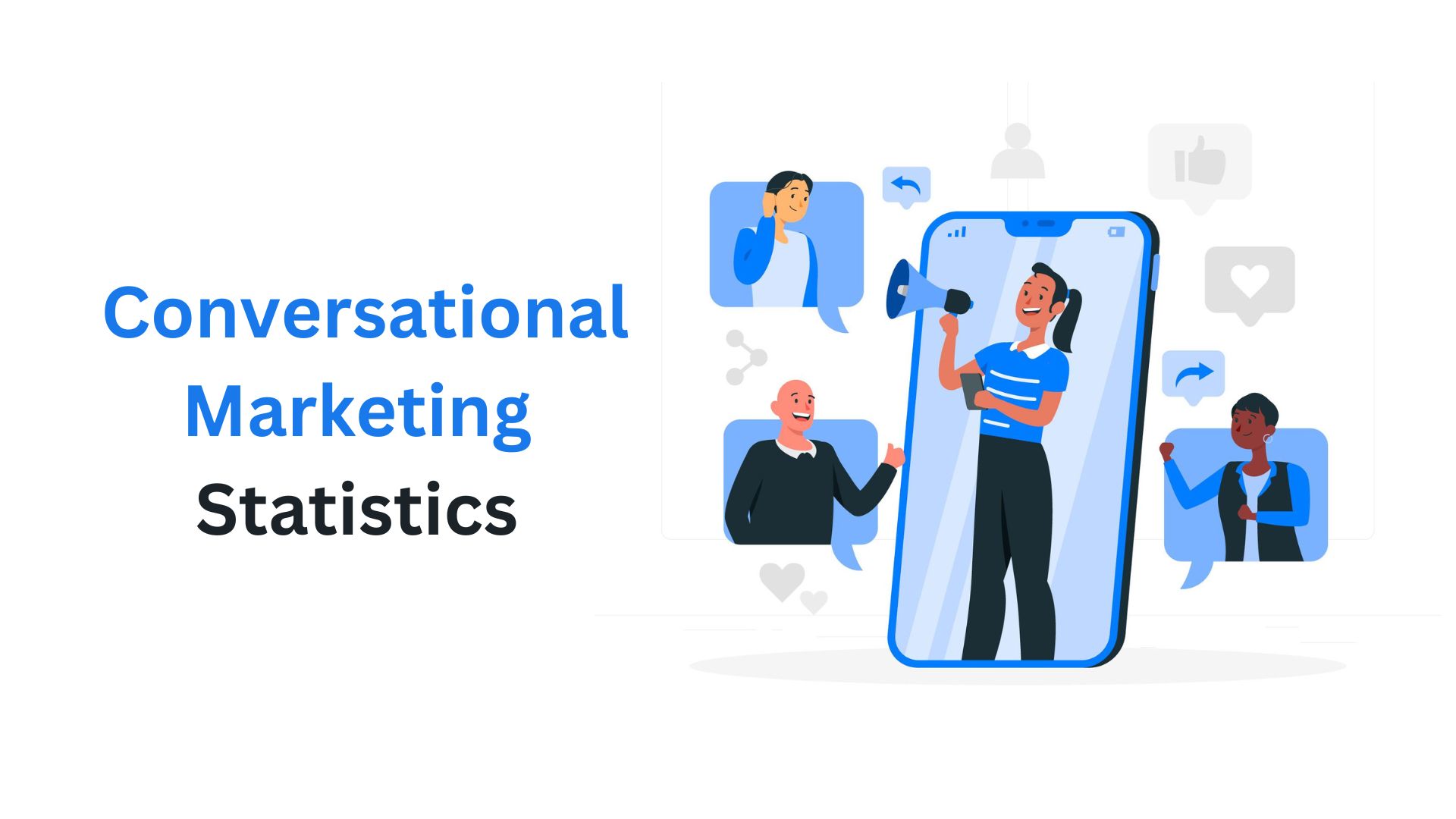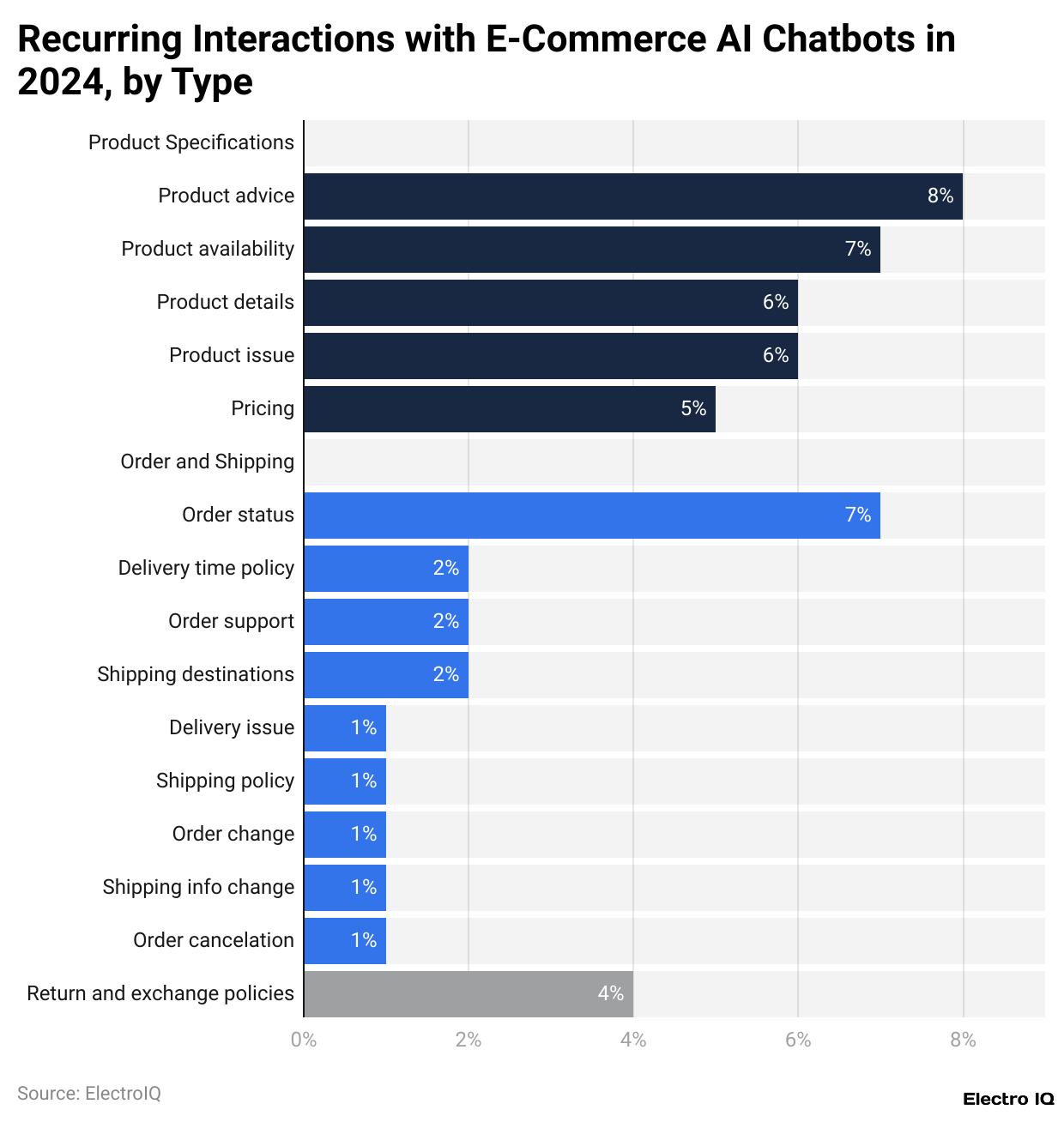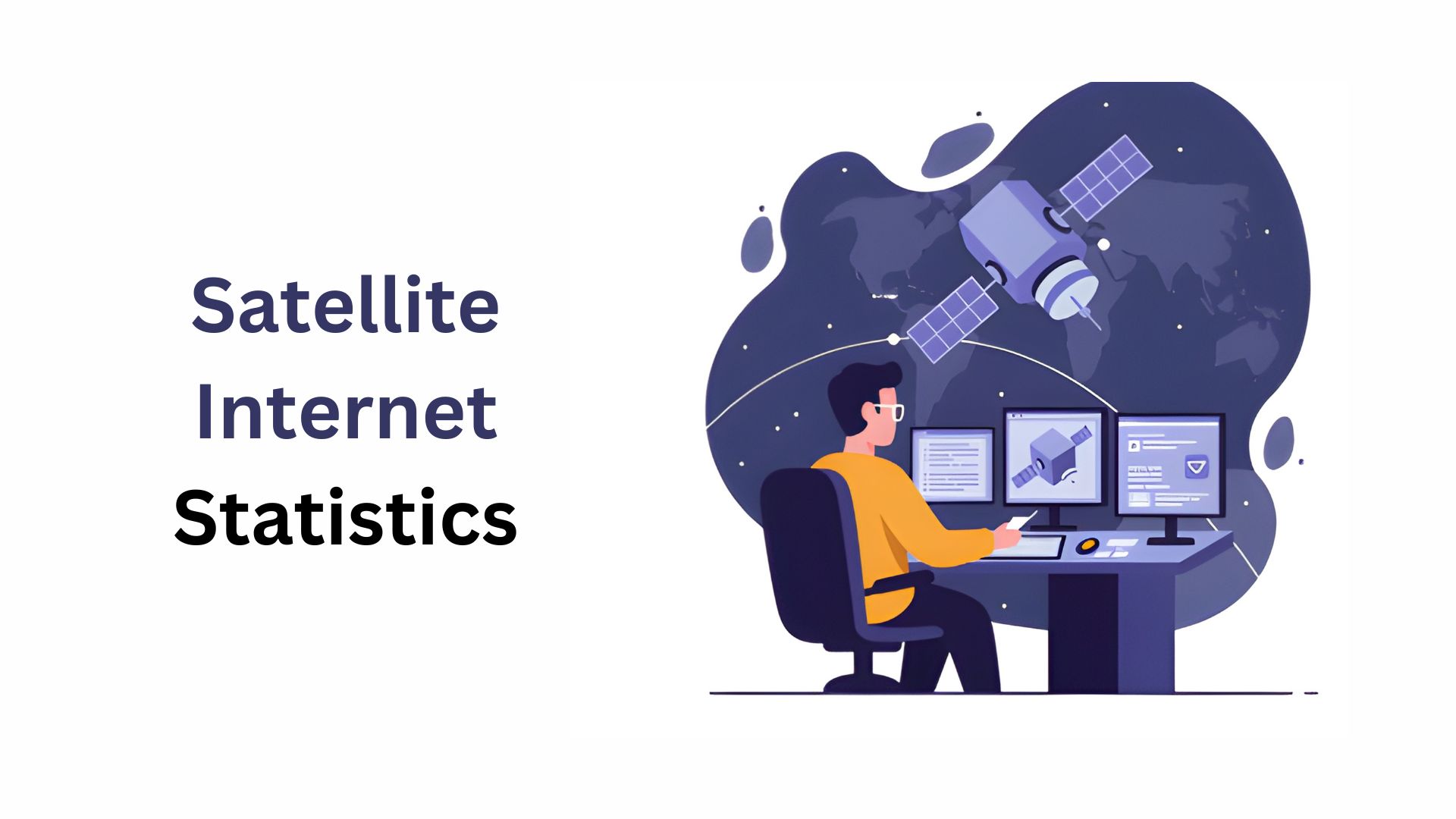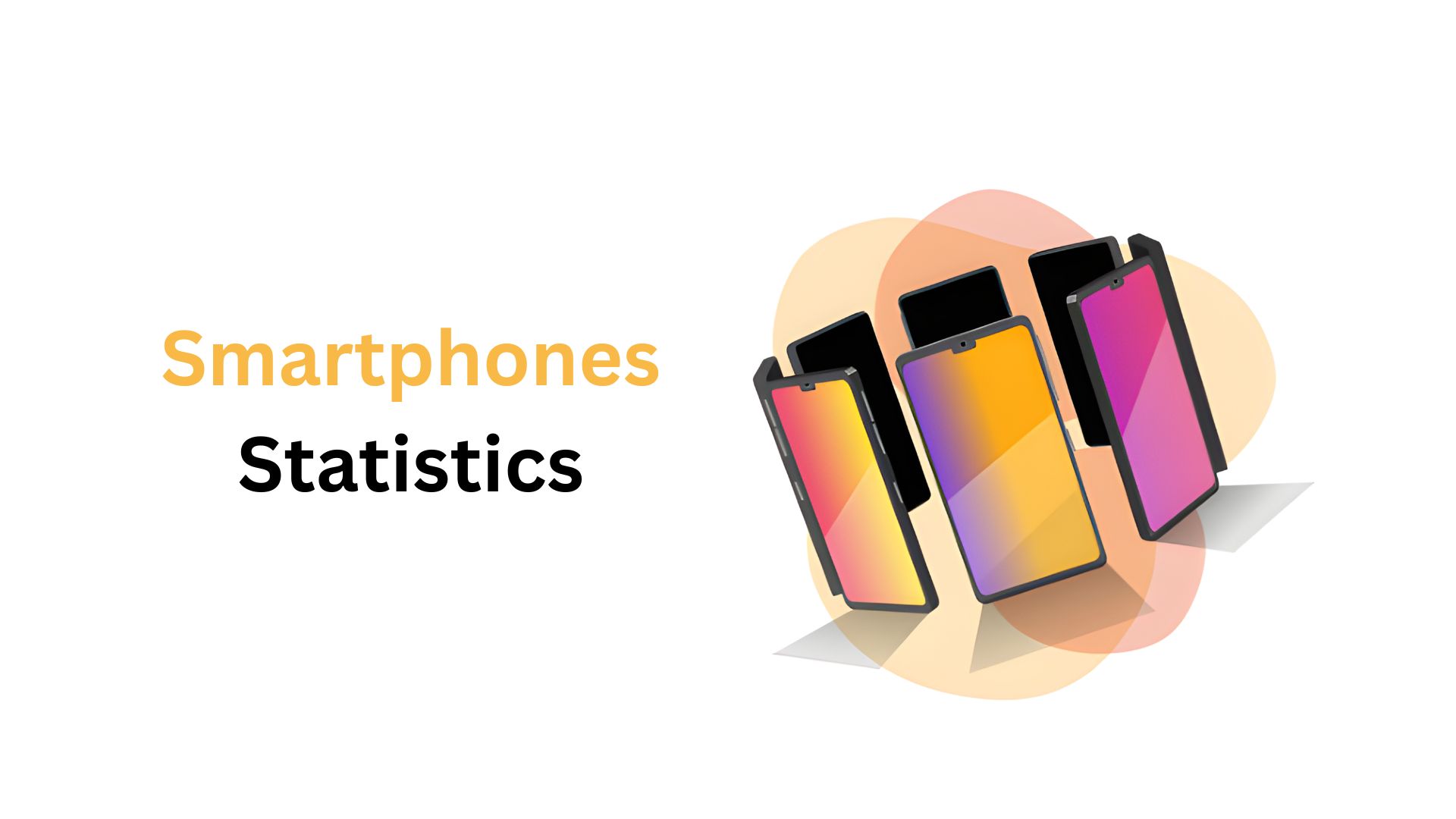Conversational Marketing Statistics And Facts (2025)
Updated · Sep 24, 2025

Table of Contents
Introduction
Conversational Marketing Statistics: The facilitation of real-time and personalised interactions has been changing the very nature of customer engagement for businesses. In 2024, manufacturers have had to use this approach to enhance the customer experience, increase sales, and reduce costs.
We will hereafter analyse the evolving conversational marketing statistics and trends that are driving the shifts in 2024, giving your business insight into its increasing impact across various sectors.
Editor’s Choice
- 77% say conversational marketing makes shopping easier and faster.
- 82% of brands report greater loyalty since the introduction of chatbots.
- 60% would rather buy from a brand that has live chat.
- 73% prefer messaging over making phone calls for customer service.
- 70% expect live support through chat.
- 57% have abandoned their purchases because of bad service.
- 79% of businesses have reported an increase in customer loyalty, sales, and revenues through conversational bots.
- Of total chatbot operations in e-commerce, 20% are used for order and shipping support, and 4% for returns reprocessing.
- 83% of consumers seek to kickstart conversations instantly with a brand.
- 69% of customers feel fast communication is crucial in chatbot exchanges.
- High-performance chatbots tend to get around an 80–90% response rate.
- 83% of consumers would be inclined to tie their loyalty to brands that provide chatbots for booking applications (Mobile Marketer).
- 60% have messaged through applications to connect with brands.
- Chatbots help retailers around the world save a cool $439 million each year.
- 57% of customers feel the pandemic has driven the adoption of chatbots.
- 68% of companies have reported better customer retention following a conversational strategy.
- Generically, chatbots deal with up to 80% of the simple complaints, making great improvements in operational efficiency.
- AI-driven retail sales would sum up to $112 billion.
- 80% of simple customer queries can be handled by IBM bots (IBM).
- 81% of brands using conversational AI have shown great improvement in customer satisfaction.
- 92% of business decision-makers say conversational marketing is of utmost importance to their strategy.
- Compared with retargeting ads, Facebook Messenger produces a 30% higher ROI. Fast responses from brands can be a deciding factor for brand loyalty in 52% of consumers.
Conversation Marketing Bot Statistics
- Conversational marketing bots have become an essential part of doing business, engaging customers, especially in 2024.
- Salesforce had reported that 71% of customers expect companies to talk with them in real-time through conversational bots. The change in expectations speaks of yet another developing trend that emphasises instant gratification, with great ease and efficiency on the side of customer service.
- Live chat, a facet of conversational marketing, strongly affects buying behaviour.
- Kayako reports show that 52% of consumers are more likely to repeat purchases if support is available via live chats.
- In addition to that, 79% of companies believe that the presence of conversational marketing bots has helped the association in increasing customer loyalty, sales, and revenue, balancing benefits for the consumer and benefits for the company.
- Furthermore, consumer preferences continue to evolve, with a study by Twilio showing that 9 out of 10 customers would prefer to message a business rather than call or email.
- Facebook Messenger seems to be extremely beneficial for brands; according to Business Insider, a conversation through Messenger has a 30% better ROI than traditional retargeting ads. Conversational bots are not being privileged just for convenience. They can also perform at scale.
- As per IBM, 80% of repetitive customer queries are answered by bots while freeing human agents for more involved queries.
- According to Chatbots Magazine, automating this process could reduce customer service costs by up to 30%, positioning them as the cheaper customer service option. This technology is particularly embraced by the younger generation.
- Mobile Marketer reports that some 40% of millennials are engaged in chatbot interactions daily. Furthermore, some 47% of customers, according to HubSpot, consider that they might complete a purchase entirely through a conversational bot without ever speaking to a human. According to Matthew Barby, some lower-engagement chatbots record 35–40% response rates, whereas well-optimised chatbots can score as high as 80–90%.
- Speed and accessibility are also huge factors that customers love—69% of them love how fast they can reach out to a brand through a chatbot, per Salesforce. And customer loyalty seems to be higher with the implementation of conversational marketing bots.
- According to Mobile Marketer, 83% of consumers would be more loyal toward a brand that offers chatbot services for tasks such as scheduling or receiving customer support.
- Furthermore, SUMO Heavy asserts that 72% of people who have interacted with chatbots describe them as useful and informative, thus enhancing the value and effectiveness of this emerging technology.
Interaction With E-commerce AI

(Reference: statista.com)
- In 2024, an e-commerce AI chatbot interaction survey revealed the range of uses customers find for the technology.
- About a third, or around 33%, of all chatbot conversations were about product-related inquiries. These comprised asking for product recommendations, checking for stock availability, or seeking specific product details, showing that shoppers often use chatbots to assist them in purchasing decisions.
- Another 20% were related to orders and shipping. This reflects that customers commonly employ chatbots to track their shipments, confirm shipping dates, or request an update on their orders.
- Product return conversations, on the other hand, only accounted for up to 4%.
- Hence, returns remain a customer journey stage but make up fewer chatbot interactions compared to product research and shipping updates.
Conversation Marketing By Customer Expectations And Preferences
- Consumers today have increasingly high expectations when it comes to how they interact with brands. In terms of expectations from brands today, messaging is the actual chokepoint in this rapid transition, giving rise to instant gratification expectations.
- About 70% of consumers want brands to be available with a chat for real-time assistance, thereby exhibiting the need for instant gratification; 78%, in fact, believe that receiving real-time answers makes their perception of a brand better.
- While 72% of customers want support from the moment they reach out, 83% would like to talk to a company immediately.
- Not surprisingly, messaging apps have become the popular choice for such to-the-minute communication: 60% have used them to contact companies; 73% would prefer using messaging to calling for customer service; 55% want to start a conversation via messaging in comparison to calls or emails, and 43% want an actual messaging app to start the conversation.
- Overall, 38% of consumers consider messaging as their preferred channel when it comes to customer service. This behaviour change is a reflection of wider patterns concerning customer frustrations and choices.
- About 44% of users feel angered when a website is unable to cater to their specific needs, and 70% expect the transition to be smooth between messaging and any other support option. The mobile aspect cannot be ignored.
- Currently, 44% of chatbot conversations occur over mobile phones. It is predicted that, by 2025, 85% of customer interactions will be handled without human agents and through AI and automation instead. This fits with the current preference, which sees 62% of consumers comfortable receiving automated responses as an initial response option, if they can also communicate with a human when needed.
- The new standard, thus, is this blend of speed, automation, and human support. When opting to shop, 77% of consumers find that conversational marketing eases and quickens the procedure, while 60% are more inclined to purchase from a brand that has live chat support.
- Personalised messaging attracts heavy engagement, too-76% of people are more likely to engage with a brand that sends targeted messages their way. Also, 49% of consumers would rather get promotions through messaging than through email or any other medium.
- Currently, 92% of business decision-makers believe conversational marketing to be an essential part of their overall strategy.
- Along the same lines, 69% of marketers consider it paramount to their digital marketing efforts, while 59% believe it has increased sales conversions.
Impact On Customer Engagement And Loyalty
- Conversational marketing continues to emerge as a giant in customer engagement, satisfaction, and loyalty.
- As per Zipdo, Conversational Marketing statistics show that about 80% of companies report increased sales after deploying conversational marketing techniques, directly affecting revenues.
- Efficiency stands tall among these; chatbots can answer 80% of routine questions with little or no human interaction, thereby freeing human resources to attend to complex tasks. And it is messaging that stands out in the channels; three times higher engagement rates are triple those of classic email marketing.
- Being fast and personalised is what shapes a consumer’s buying decision. 70% of consumers say they feel more confident in brands that offer personalised interactions, and 52% require fast response times as a critical part of brand loyalty.
- Bad customer service still drives the customer away. 57% of them admit to aborting a purchase because of bad customer service.
- 65% of those customers say they would be more willing to buy from companies allowing messaging as an interaction channel, and 58% say they are more likely to buy after engaging with a brand through a messaging platform.
- From marketing angles, conversational marketing delivers quantifiable results, with brands achieving click-through rates four to five times higher than usual advertising rates.
- Moreover, 65% of marketers saw an increase in brand engagement owing to these strategies. The customer experience improves too: 81% of brands that already use conversational AI have enhanced customer satisfaction scores in their books, while 68% of companies employing conversational sales and marketing report better customer retention rates over the long haul.
- 82% of brands stated an improved customer loyalty indicator after working with these tools, while 67% of consumers concur by stating they are more likely to stay loyal to brands that respond to their queries in a matter of moments.
Conversational AI At The Corporate Level
- The retail sector rapidly embraced conversational AI to improve customer experiences, cut down operational costs, and enhance sales.
- More and more customers are now depending on AI-powered tools in their shopping experiences.
- 17% of the shoppers in the U.S. already use a chatbot to get product information before making a purchase, whereas 40% have interacted with chatbots in broader retail settings. This attests to conversational AI becoming the very mechanism by which customers interface with retailers. The financial impact is rather significant.
- The use of chatbots is expected to save retail internationally about $439 million annually, while retail sales generated through AI-powered bots are expected to reach $112 billion. Hence, the figures stand testament to the efficiency and revenue potential being offered by conversational AI in this industry.
- E-commerce platforms are making use of AI not just through chat interfaces but also speech recognition technology.
- These tools help in designing smooth, context-aware conversations to fast-track and personalise the purchasing experience, a notion that has become the norm for many shoppers.
- For instance, 42% of Gen Z consumers feel comfortable using chatbots to make purchases, pointing sharply in the direction of digital-first interactions among younger shoppers.
- The pandemic further contributed to the shift, with 57% of consumers recalling that COVID-19 was a key motivating factor in becoming open to AI bots for retail interactions.
- The retail sector accounts for 23.3% of the global conversational AI market and thus is a leader in the adoption of that technology.
- Equally importantly, trust is growing: 54% of buyers believe that AI keeps their info safe during transactions online.
Conclusion
Conversational Marketing Statistics: Conversational marketing is now an integral part of business strategies and is offering real-time and individualised interactions to meet the ever-changing consumer expectations. Conversational marketing tools such as chatbots and live chat are fast entering the mainstream because of greater sales, happy customers, and lower operational costs.
The technological developments will make conversational marketing all the more prominent, and its presence is a must for all businesses that want to hang on in today’s digital world.
Sources
FAQ.
Conversational marketing is defined as the real-time, individualised interaction between the company and its potential and actual customers, facilitated largely through chatbots, live chats, and messaging applications. These days, it is very relevant since 92% of business decision-makers consider it imperative to their growth strategy. The approach enhances customer experience, improves sales, contributes to lowering operational costs, and increases loyalty, thus making it a crucial aspect of digital engagement today.
Consumer preferences strongly lean toward chatting. 83% want to get in touch with companies right away, and messaging is preferred over phone calls by 73%. Furthermore, to date, 60% of consumers have used messaging applications to contact some brands. Chatbots are also welcome: 72% of them consider the bot useful, and 62% are comfortable getting automated responses as long as there is an option for human support when required.
Conversational marketing has tremendously impacted customer loyalty and sales. Reports show that 82% of brands saw an increased level of loyalty after implementing chatbots. Another 80% of companies saw sales growth, 68% witnessed greater customer retention, and 65% had an increase in brand engagement. The key factors behind all these advancements included real-time responses and personalised interactions.
In e-commerce, chatbots work chiefly to assist with: product-related questions (33%), order and shipping updates (20%), and, to an extent, product returns (4%). This reflects their ever-growing contribution to pre-purchase decision-making and post-purchase support.
Chatbots improve efficiency and bring in huge cost savings. Around 80% of repetitive queries are attended to by chatbots, leaving human agents to handle the more complex issues. This automation has resulted in a 30% reduction in customer service costs. Retailers alone save $439 million annually utilising chatbots, and AI-powered retail sales are forecasted to reach $112 billion.

Tajammul Pangarkar is the co-founder of a PR firm and the Chief Technology Officer at Prudour Research Firm. With a Bachelor of Engineering in Information Technology from Shivaji University, Tajammul brings over ten years of expertise in digital marketing to his roles. He excels at gathering and analyzing data, producing detailed statistics on various trending topics that help shape industry perspectives. Tajammul's deep-seated experience in mobile technology and industry research often shines through in his insightful analyses. He is keen on decoding tech trends, examining mobile applications, and enhancing general tech awareness. His writings frequently appear in numerous industry-specific magazines and forums, where he shares his knowledge and insights. When he's not immersed in technology, Tajammul enjoys playing table tennis. This hobby provides him with a refreshing break and allows him to engage in something he loves outside of his professional life. Whether he's analyzing data or serving a fast ball, Tajammul demonstrates dedication and passion in every endeavor.










